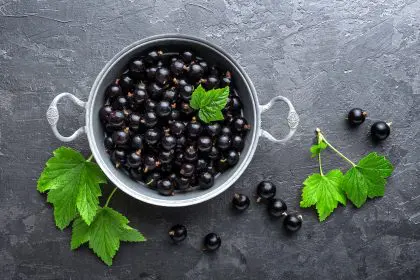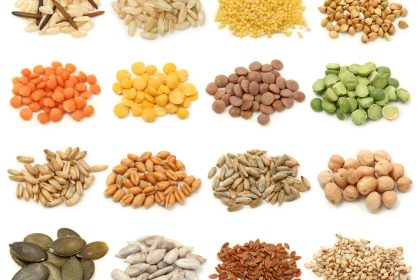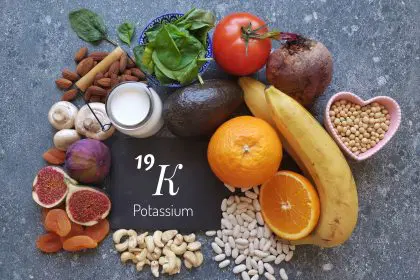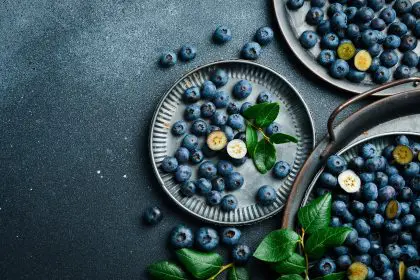Blood sugar management has become a growing concern for millions of people worldwide, with many seeking natural alternatives to support their body’s ability to regulate glucose levels effectively. The human body produces insulin naturally to help cells absorb sugar from the bloodstream, but certain foods contain compounds that can enhance this process or provide similar benefits.
These natural food-based solutions offer hope for those looking to support their blood sugar levels through dietary choices rather than relying solely on medications. The concept of food as medicine isn’t new, but understanding which specific foods can mimic insulin’s effects opens up exciting possibilities for natural health management.
The beauty of these natural insulin-like foods lies in their accessibility and affordability. Unlike expensive supplements or prescription medications, these five powerful foods are readily available in most grocery stores and can be easily incorporated into daily meals and snacks.
Understanding how these foods work in the body can help people make informed dietary choices that support their overall health and well-being, particularly when it comes to maintaining stable blood sugar levels throughout the day.
Food 1: Cinnamon – the aromatic blood sugar regulator
Cinnamon stands out as one of the most potent natural blood sugar regulators available in any spice cabinet. This aromatic bark contains compounds that help cells become more sensitive to insulin, essentially making the body’s natural insulin work more effectively.
The active compounds in cinnamon appear to activate enzymes that stimulate insulin receptors, helping glucose move from the bloodstream into cells where it can be used for energy. This process closely mimics what insulin does naturally in the body, making cinnamon a valuable ally for blood sugar management.
Regular consumption of cinnamon has been associated with improved glucose tolerance and better overall blood sugar control. The spice seems to slow down the emptying of the stomach after meals, which helps prevent rapid spikes in blood sugar levels that can occur after eating.
Ceylon cinnamon, often called “true cinnamon,” tends to be gentler and more beneficial than the more common cassia variety found in most grocery stores. However, both types offer blood sugar benefits when used regularly in appropriate amounts.
Adding cinnamon to daily routines can be as simple as sprinkling it on oatmeal, stirring it into coffee or tea, or incorporating it into baked goods and smoothies. Even small amounts can provide meaningful benefits when consumed consistently over time.
Food 2: Bitter melon – nature’s glucose controller
Bitter melon, despite its challenging taste, contains some of the most insulin-like compounds found in the natural world. This unique vegetable produces substances that can actually substitute for insulin in some of its functions within the body.
The bitter compounds in this melon include charantin, vicine, and polypeptide-p, which work together to help lower blood glucose levels. These natural chemicals can help cells uptake glucose more efficiently, similar to how insulin facilitates this process.
Bitter melon also contains compounds that may help regenerate beta cells in the pancreas, the specialized cells responsible for producing insulin. This regenerative potential makes bitter melon particularly valuable for supporting long-term blood sugar health.
The vegetable can be prepared in various ways to make it more palatable, including stir-frying with other vegetables, adding it to soups, or even consuming it as a juice mixed with other more pleasant-tasting ingredients like apple or carrot juice.
For those who find the taste too challenging, bitter melon supplements are available, though fresh consumption typically provides more comprehensive benefits due to the presence of fiber and other supportive compounds.
Food 3: Fenugreek seeds – tiny powerhouses of blood sugar control
Fenugreek seeds pack remarkable blood sugar-regulating power into their small size. These seeds contain soluble fiber and compounds that slow down digestion and absorption of carbohydrates, helping to prevent rapid blood sugar spikes after meals.
The seeds contain 4-hydroxyisoleucine, an amino acid that appears to stimulate insulin production only when blood glucose levels are elevated. This smart mechanism means fenugreek can help when needed without causing blood sugar to drop too low.
Galactomannan, a type of soluble fiber abundant in fenugreek seeds, forms a gel-like substance in the digestive tract that slows down sugar absorption. This delayed absorption helps maintain more stable blood glucose levels throughout the day.
Fenugreek seeds can be soaked overnight and consumed in the morning, ground into powder and added to smoothies or yogurt, or incorporated into cooking as a spice. The seeds have a slightly bitter, nutty flavor that works well in both sweet and savory dishes.
Starting with small amounts is recommended, as fenugreek can cause digestive upset in some people when consumed in large quantities initially. Gradually increasing intake allows the digestive system to adjust to the increased fiber content.
Food 4: Apple cider vinegar – the fermented blood sugar stabilizer
Apple cider vinegar has gained attention for its ability to improve insulin sensitivity and help stabilize blood sugar levels, particularly when consumed before meals. The acetic acid in vinegar appears to slow down the digestion of starches, leading to smaller blood sugar rises after eating.
The vinegar seems to improve the way muscles use glucose, helping cells absorb sugar more efficiently from the bloodstream. This enhanced glucose uptake reduces the burden on the pancreas to produce large amounts of insulin after meals.
Consuming apple cider vinegar before carbohydrate-rich meals can significantly blunt the blood sugar response, making it easier for the body to maintain stable glucose levels. This effect is particularly pronounced when vinegar is consumed 15-30 minutes before eating.
The recommended amount is typically 1-2 tablespoons diluted in water before meals. Consuming undiluted vinegar can damage tooth enamel and irritate the digestive tract, so proper dilution is essential for safe consumption.
Apple cider vinegar can be incorporated into salad dressings, marinades, or consumed as a drink with water and a touch of honey to improve palatability. Consistency in consumption appears to be more important than large quantities.
Food 5: Chromium-rich foods – mineral magic for glucose metabolism
Foods naturally high in chromium, including broccoli, whole grains, and nuts, play crucial roles in glucose metabolism by enhancing insulin’s effectiveness in the body. Chromium helps insulin bind to cells more effectively, improving glucose uptake and utilization.
Broccoli stands out as one of the richest sources of bioavailable chromium, providing this essential mineral in a form that the body can easily absorb and use. The vegetable also contains other compounds that support healthy blood sugar levels.
Whole grains, particularly those that haven’t been heavily processed, retain their natural chromium content along with fiber that helps slow glucose absorption. These foods provide sustained energy while supporting stable blood sugar levels.
Nuts and seeds offer chromium along with healthy fats and protein that can help stabilize blood sugar when consumed as part of balanced meals or snacks. The combination of nutrients works synergistically to support glucose metabolism.
The key to benefiting from chromium-rich foods is consuming them regularly as part of a varied diet rather than relying on any single source. This approach ensures adequate intake while providing other supportive nutrients.
How these foods work together for maximum benefit
Combining these five natural insulin-like foods can create synergistic effects that enhance blood sugar control beyond what any single food might provide alone. Each food works through different mechanisms, providing comprehensive support for glucose metabolism.
Creating meals that incorporate multiple blood sugar-supporting foods can help maintain more stable glucose levels throughout the day. For example, a breakfast that includes cinnamon-spiced oatmeal made with apple cider vinegar and topped with nuts provides several different blood sugar benefits.
Timing consumption of these foods strategically around meals can maximize their blood sugar-stabilizing effects. Having apple cider vinegar before eating, including cinnamon in the meal, and finishing with a small portion of nuts can provide comprehensive glucose support.
The fiber content in several of these foods also supports healthy digestion and helps maintain feelings of fullness, which can prevent overeating and subsequent blood sugar spikes from large meals.
Incorporating natural insulin foods into daily life
Making these foods a regular part of daily eating doesn’t require dramatic dietary changes or expensive specialty ingredients. Simple modifications to existing meals can significantly increase intake of these blood sugar-supporting foods.
Morning routines can easily include cinnamon in coffee, tea, or breakfast cereals. Adding a tablespoon of apple cider vinegar to a glass of water before breakfast provides an early blood sugar benefit for the day.
Lunch and dinner preparations can incorporate bitter melon into stir-fries or soups, while fenugreek seeds can be ground and added to marinades or spice blends for enhanced flavor and blood sugar benefits.
Snacking presents opportunities to consume chromium-rich nuts or seeds, providing blood sugar support between meals while offering satisfying protein and healthy fats that help maintain stable energy levels.
Maximizing benefits through consistent consumption
The key to experiencing the blood sugar benefits of these natural insulin-like foods lies in consistent, regular consumption rather than occasional use. Building these foods into daily routines helps maintain steady blood sugar support over time.
Starting gradually with these foods allows the body to adjust, particularly with fiber-rich options like fenugreek seeds that might cause digestive discomfort if introduced too quickly or in large amounts.
Keeping track of how different foods affect individual blood sugar responses can help optimize timing and quantities for maximum benefit. What works best can vary from person to person based on individual metabolism and health status.
The long-term benefits of incorporating these natural foods into daily eating patterns extend beyond blood sugar control to include improved overall health, better energy levels, and reduced risk of developing metabolic complications over time.

















